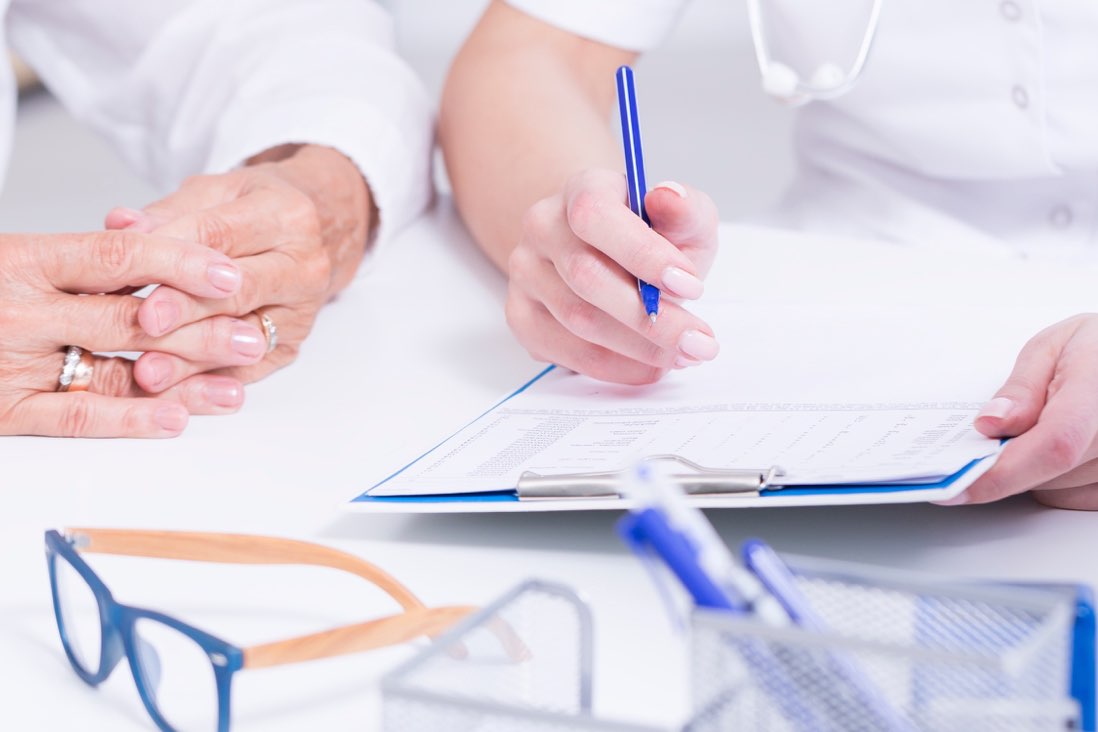5 Common Misunderstandings About Thyroid Disease
Whether it’s the family doctor, endocrinologist, chiropractor, or an herbalist, you may not be getting straight information regarding your thyroid. Here are five very common myths and bits of misinformation that you are very likely to hear, along with the real story you need to know.
1. Your Levels Are Normal
First, what does “normal” mean. A decade ago, the medical community went by the standard that .5 to 5.0 on the Thyroid Stimulating Hormone (TSH) blood test was the normal range. If your TSH was below .5, you were hyperthyroid/overactive. If your TSH was above 5.0, you were hypothyroid/underactive. In 2002, both the American Association of Clinical Endocrinologists and The National Academy of Clinical Biochemistry’s “Laboratory Medicine Practice Guidelines,” recommended that the normal range be revised to .3 to 3.0. Then, several years later, they abandoned these recommendations. You may have a TSH level in the “normal” reference range, but if you are in the higher end of the range, some physicians do not believe that it necessarily normal or healthy for you. When a doctor tells you your levels are “normal,” ask what “normal range” he/she is actually using to make that determination.
2. If You Have a Thyroid Problem, Take Iodine or Kelp
Natural health practitioners who don’t truly understand thyroid function are often quick to tell you that “thyroid problems mean you need iodine” or iodine-containing herbs or supplements, such as kelp, bladderwrack and bugleweed. If you are truly iodine deficient, iodine may be able to help your thyroid. Studies have shown that iodine deficiency is actually on the rise in the U.S., and about 12% of the U.S. population is currently iodine deficient, up from less than 3 percent in the early 1970s. So, for some people, iodine deficiency may be a factor in their thyroid problem. But for some people, iodine or iodine-containing products make worsen autoimmune thyroid problems such as Hashimoto’s and Graves’ disease, and cause enlargement of the thyroid (goiter). Before you start iodine, consider having urinary iodine measured to see if you have an actual deficiency, and pay close attention to any symptoms that develop after you start to take iodine.
3. You Have Graves’ Disease/Hyperthyroidism and Need Radioactive Iodine (RAI) Treatment
When it comes to autoimmune thyroid disease, Hashimoto’s disease, which usually results in hypothyroidism, is the far more common than Graves’ disease, which causes hyperthyroidism. At some stages of Hashimoto’s disease, however, and in particular, often during the early stages, the thyroid that is in the process of autoimmune failure may actually spurt into action and become temporarily overactive, making a person hyperthyroid. Sometimes, it’s the temporary hyperthyroidism symptoms—anxiety, heart palpitations, fast pulse, weight loss, diarrhea, insomnia—that first bring a Hashimoto’s patient to the doctor.
Unfortunately, some doctors order a TSH test, see the low TSH that is characteristic of hyperthyroidism, and recommend radioactive iodine treatment—a usually permanent treatment that disables your thyroid, and makes you hypothyroid for life. The problem is that in these cases, it’s not Graves’ disease, and the hyperthyroidism is just temporary, a condition known as “Hashitoxicosis.” In this case, you may have a temporary period of hyperthyroidism, but actually be your way to becoming hypothyroid. In some cases, unless the hyperthyroidism is life-threatening and uncontrollable using drugs, the expensive radiation treatment is needless administered. If you are told that you have Graves’ disease or hyperthyroidism, and are rushed to have RAI, insist on blood tests for antibodies that confirm Graves’ disease, as well as imaging tests. You want your physician to demonstrate that you do indeed have Graves’/hyperthyroidism, and are not just experiencing temporary Hashitoxicosis.
4. Basal Body Temperature Can Diagnose Hypothyroidism
Here is a situation where a clinical sign—low body temperature, has been turned into a “one size fits all” diagnostic tool that simply doesn’t work. It’s medically known that thyroid hormones have a direct effect on the basal, or resting, metabolic rate. And while hypothermia, or lowered body temperature, is a known and medically accepted symptom of hypothyroidism, some practitioners believe that body temperature is an infallible diagnostic tool. The late Broda Barnes, M.D. made the public more widely aware of the use of axillary (underarm) basal body temperature (BBT) as a symptom and diagnostic tool for hypothyroidism. It is a diagnostic and monitoring method still used by some complementary and alternative practitioners.
To measure your BBT, use a special BBT thermometer. As soon as you awake, with minimal movement, put the thermometer in your armpit, next to the skin, and leave it for ten minutes. Record the readings for three to five consecutive days. Women who still have their menstrual period should not test on the first five days of their period but can begin on day five. Men, and girls and women who are not menstruating can test any time of the month. If the average BBT is below 97.6 Fahrenheit, some complementary practitioners would consider a diagnosis of an underfunctioning thyroid or insufficient thyroid hormone replacement. An average BBT between 97.8 and 98.2 is considered normal. Temperatures from 97.6 to 98.0 degrees Fahrenheit are considered evidence of possible hypothyroidism, and temperatures less than 97.6 degrees can be even more indicative of hypothyroidism. Some practitioners, however, consider any temperature under 98 degrees to be indicative of hypothyroidism. Use of basal body temperature is controversial, however, and even those practitioners who use the test caution that it should be part of an overall approach, and not solely relied upon.
5. The Only Treatment for Hypothyroidism Is Synthroid
Perhaps one of the most common fallacies doctors regularly repeat is that Synthroid is the only treatment for hypothyroidism. Actually, Synthroid is a brand name for the drug “levothyroxine”—a synthetic form of the thyroid hormone thyroxine, also known as T4. Synthroid happens to be the top-selling brand-name levothyroxine drug, primarily due to its marketing. Synthroid, however, is almost always the most expensive levothyroxine. Other brands, considered equally effective by many practitioners, and almost always less expensive, include Levoxyl and Unithroid. Some patients find that they respond best to a one brand—not necessarily Synthroid—due to the way that brand dissolves and is absorbed, or the fillers and dyes used by the different manufacturers. In addition to the levothyroxine drugs, there is also liothyronine—the generic name for the T3 hormone. The brand name is Cytomel. Adding T3 to levothyroxine has been found to help some thyroid patients relieve symptoms more effectively than levothyroxine (T4) alone.
Finally, there is the category of prescription drugs known as natural desiccated thyroid. Don’t mistake these with over-the-counter glandular thyroid supplements—they are not the same. Prescription natural desiccated thyroid—the primary brand being Armour Thyroid, but also available are Nature-throid, Thyroid WP, and a generic made by Acella—is made from the dried thyroid gland of pigs. It includes natural T4 and T3, plus other less-understood thyroid hormones including T2, T1. Some practitioners, and in particular holistic, integrative and natural health experts, find that natural thyroid is optimal for some patients.
Sources: VeryWell, Braverman, L, Cooper D. Werner & Ingbar’s The Thyroid, 10th Edition. WLL/Wolters Kluwer; 2012.

